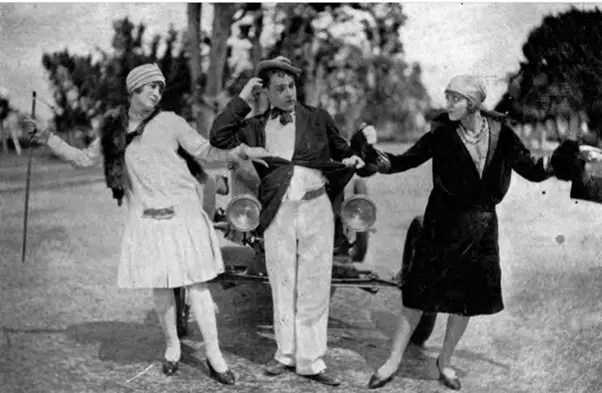
Emerson Romero’s name is synonymous with advocacy, innovation, and resilience. As a silent film actor who transitioned into a passionate accessibility pioneer, Romero’s contributions to the deaf community and the entertainment industry are immeasurable. His life’s work championed the development of accessible media, ensuring equal opportunities for deaf individuals to engage with and contribute to a medium that had often overlooked them. By celebrating Romero’s achievements, we honor his legacy as a trailblazer for inclusion and equality.
From Silent Film Star to Accessibility Advocate
Born into a hearing family in the early 20th century, Emerson Romero found his place in the spotlight during the silent film era. Known as “El Mimo” (The Mime), his expressive performances captivated audiences and showcased his talent for non-verbal storytelling. The silent film medium—reliant on visuals, gestures, and intertitles—allowed Romero to thrive despite his hearing loss.
However, the advent of sound films in the late 1920s brought significant challenges. Dubbed “talkies,” these films sidelined many silent film actors and marginalized the deaf community. For Romero, this shift was both a personal and professional blow. Instead of retreating, he embraced a new mission: advocating for the inclusion and rights of deaf individuals in the entertainment industry.
Pioneering Accessible Media
Romero’s most notable contribution to accessible media was his pioneering work in creating early forms of closed captioning. In the 1940s, he developed a method to manually add subtitles to film reels, allowing deaf audiences to follow dialogue and sound-based narratives. His efforts were groundbreaking, introducing a way for the deaf community to engage with media that had become inaccessible.
While his early captioning methods were labor-intensive and lacked the sophistication of modern systems, they marked the beginning of a movement toward media accessibility. Romero’s innovations laid the groundwork for the closed captioning technologies that are now standard across film, television, and digital platforms. These systems transformed how media is consumed, making it more inclusive for all.
Advocating for Representation
Beyond his technical contributions, Romero was a vocal advocate for deaf representation in Hollywood. He believed that authentic portrayals of deaf characters and stories were essential for fostering understanding and breaking down stereotypes. His advocacy highlighted the importance of including deaf voices not just as consumers of media but as creators and storytellers.
Romero’s work inspired conversations about diversity and inclusion that continue to shape the entertainment industry. Today, his vision is reflected in films like Sound of Metal and CODA, which authentically portray deaf experiences and feature deaf actors in leading roles. These successes owe much to Romero’s pioneering efforts to pave the way for greater representation.
A Lasting Legacy in Accessible Media
Although Emerson Romero’s contributions were not widely recognized during his lifetime, his impact has been profound. The accessibility features we often take for granted today, such as closed captions, are a direct result of his vision and persistence. These tools benefit not only the deaf community but also millions of others, including non-native speakers and viewers in noisy environments.
Romero’s legacy extends beyond technical advancements. His advocacy for representation has inspired generations of filmmakers, actors, and accessibility advocates to prioritize inclusivity in their work. By challenging the status quo, he ensured that the deaf community’s needs and stories would no longer be ignored.
Inspiration for Future Generations
Emerson Romero’s story is a testament to the power of perseverance and innovation. His ability to transform personal challenges into opportunities for systemic change continues to inspire advocates for accessibility and representation. As new technologies emerge, Romero’s legacy serves as a reminder of the importance of inclusivity in shaping a better future for all.
Conclusion
Emerson Romero’s contributions to the evolution of accessible media are both groundbreaking and enduring. As a champion for deaf rights and representation, he transformed the entertainment industry and left an indelible mark on media accessibility. His vision of an inclusive world, where everyone has the opportunity to share and experience stories, remains as vital today as it was during his lifetime.
Romero’s life reminds us that true progress comes from challenging barriers and advocating for equality. His legacy continues to inspire us to build a world where all voices are heard and valued.